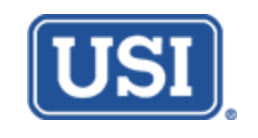CMS Finalized Home Health Rules – Hospices Significantly Impacted
The Health Group
[CMS] finalized the Home Health Prospective Payment System Rate Update which includes many provisions impacting hospices. The following provider enrollment regulations were finalized:
- § 424.502 Definitions. Revises the definition of managing employee to include Hospice and SNF Medical Director and Administrator.
- § 424.518 Screening levels for Medicare providers and suppliers. Revised to accommodate PHE waiver for fingerprint based criminal background checks for newly enrolled high-risk providers, including hospices.
- § 424.527 Provisional period of oversight. Codifies who is subject to a provisional period of oversight and the effective date, including hospices.
- § 424.530 Denial of enrollment in the Medicare program. Reapplication bar changed to 10 years from 3 years. A provider or supplier that is currently subject to a reapplication bar may not order, refer, certify, or prescribe Medicare-covered services, items, or drugs, and Medicare will not pay for services ordered.
- § 424.540(a)(1) change the 12-month time frame to 6 months for deactivations related to non-billing, including hospices.
- § 424.550 Prohibitions on the sale or transfer of billing privileges. Applies the 36-month rule to hospice providers.
Additionally, the Hospice Special Focus Program ("SFP”) will proceed with implementation in 2024. SFP is a program intended to identify hospices as poor performers. Selected hospices will be subjected to increased oversight, and they must successfully complete the SFP program or be terminated from the Medicare program.
The final rule essentially gave no consideration to comments made to the proposed rule and all proposed provisions were finalized as proposed. While many provisions in the final rule will increase costs incurred by hospices to comply, the implications associated with SFP are most concerning. The final rule did not address any recommendations on delaying the implementation of SFP or how the SFP could be improved, including:
- Scaling the survey data by hospice size,
- Accounting for the large number of hospices that do not have reportable HCI scores or data for the 4 CAHPS measures,
- Reducing the weight given to CAHPS data in the SFP algorithm,
- Providing transparency into exactly how SFP hospices will be chosen from the list of bottom 10% performers,
- Providing SFP hospices with technical assistance to support quality improvement,
- Going back to the SFP TEP to address technical shortcomings of the proposed design, and
- Giving hospices a preview period so they could better understand their SFP scores before the program was fully implemented.
By implementing the SFP using a flawed algorithm, underlying criteria for selecting hospices for SFP will be based on:
- Survey reports with Condition-Level Deficiencies (“CLDs”),
- CMS Medicare data sources from the Hospice Quality Reporting Program (“HQRP”), and
- Medicare claims and Consumer Assessment of Healthcare Providers and Systems (“CAHPS”) Hospice Survey.
The process, as outlined, will fail to identify hospices most appropriate for additional oversight and support, and risk reducing access to higher-quality care by directing patients and families to hospices that perform most poorly relative to health and safety requirements. Even CMS, in the final rule concludes, “The final SFP algorithm is designed as an initial step in identifying poor quality indicators.”
More detailed information will be provided on the final rule and hospice implications with further in-depth review, including addressing the practical implications of the changes. The entire rule is available here.
The provisions of the final rule impacting hospices will be discussed at our conference next week in Ft. Lauderdale. Details are available here.
|

